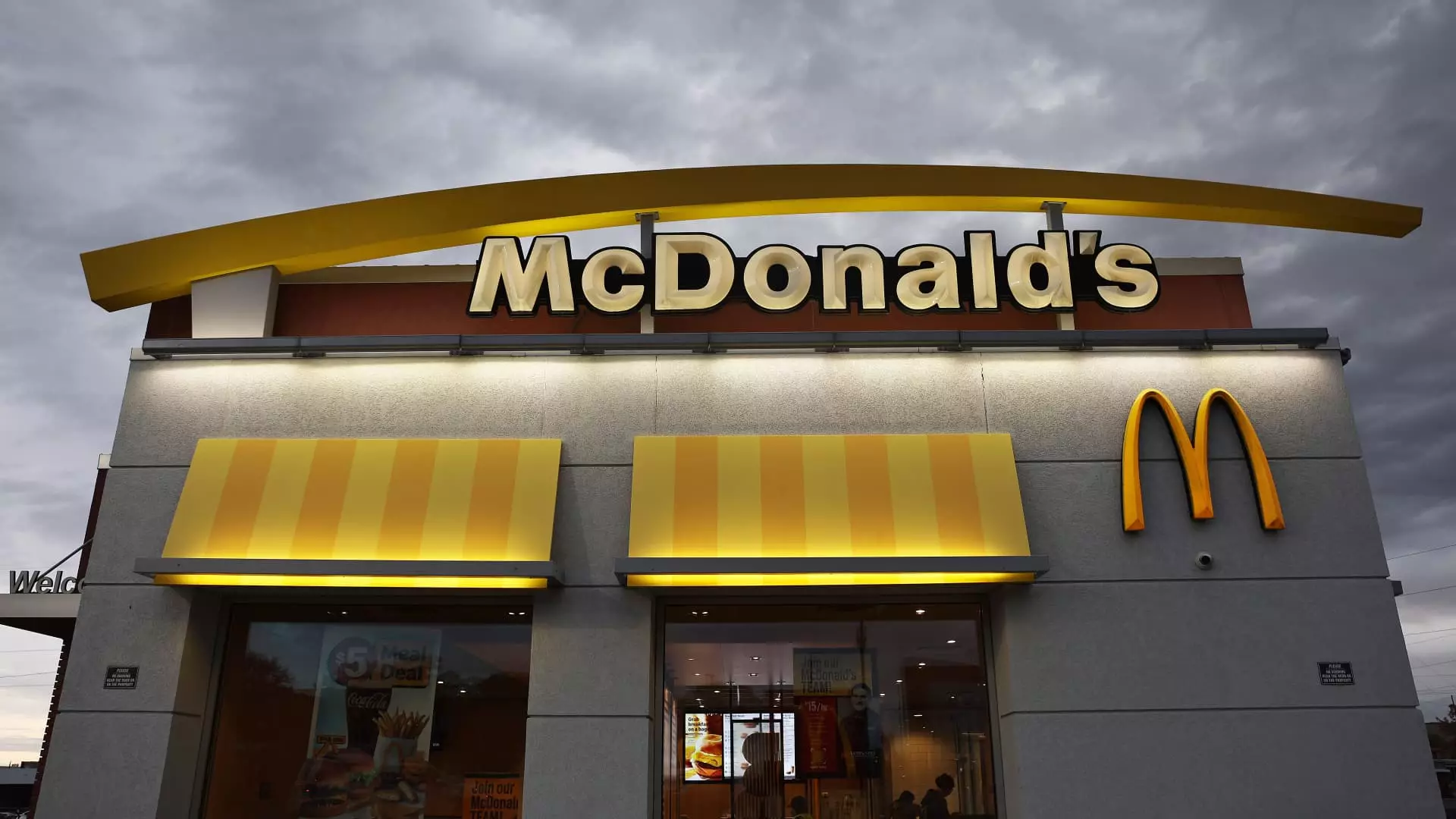McDonald’s, the global fast-food giant, has unveiled a less-than-stellar quarterly revenue report, primarily influenced by a significant E. coli outbreak that tarnished the brand’s reputation and impacted sales within the U.S. restaurants. While the company’s financial figures met some expectations, the overall performance raised eyebrows for a brand traditionally associated with consistency and resilience. The fallout from the outbreak, detected shortly into the quarter, has left analysts and stakeholders alarmed, prompting an urgent reevaluation of strategies and consumer perceptions.
The company reported an adjusted earnings per share of $2.83, consistent with forecasts, yet the revenue of $6.39 billion fell short of the anticipated $6.44 billion. This discrepancy signals potential trouble beneath the surface, showcasing that beating earnings expectations in terms of per-share growth does little to mask larger issues such as dwindling sales and an ailing consumer base. The market’s immediate reaction to this troubling report was indicative; shares slipped marginally, reflecting investor wariness as they digest the implications of these slowdowns.
One of the most alarming revelations from McDonald’s report was the steep decline in same-store sales within the U.S., which plummeted by 1.4%. Analysts had projected a milder decline of 0.6%, indicating that the outbreak had more severe repercussions than imagined. Despite the presence of slightly positive traffic, the overall spending habits of customers were markedly lower, suggesting that consumers are becoming increasingly cautious, likely influenced by the adverse media coverage surrounding food safety.
This scenario emphasizes a critical challenge for McDonald’s: rebuilding trust and comfort among its customer base following the E. coli incident. The company did implement a price-conscious strategy earlier in the quarter by introducing a $5 combo meal, which proved effective in enhancing foot traffic. However, analysts suggested that such tactics could backfire if consumers do not supplement their orders with higher-margin items. This delicate balance is essential for maintaining profitability in a tightening market where value is key.
Contrasting sharply with the U.S. narrative, McDonald’s international divisions reported robust performance, with notable successes that helped to buoy the company’s overall figures. The international developmental licensed markets segment posted impressive same-store sales growth of 4.1%, while the international operated markets managed a marginal growth of 0.1%. This discrepancy raises questions about the varying strategies employed across different regions and how McDonald’s can harness these successes to revitalize its U.S. operations.
The global brand continues to find opportunities for growth, showcasing resilience in markets such as Japan and parts of the Middle East. These regions demonstrate consumer trends that are diverging from the U.S., suggesting that McDonald’s could benefit from employing more localized strategies that resonate with different demographics and cultural preferences. As the company’s performance outside the U.S. remains robust, leaders must study these markets to glean insights into effective business practices that could reinvigorate domestic performance.
As McDonald’s navigates these turbulent waters, the importance of prioritizing customer safety cannot be overstated. The rapid decision to switch suppliers post-outbreak illustrates adaptability, yet it also underscores a need for unwavering vigilance in food safety throughout its operations. In the fast-food arena, reputation is a fragile asset, easily marred by incidents that can lead to substantial financial losses and long-lasting damage to consumer trust.
Moving forward, a dual approach may be essential for McDonald’s: revitalizing the U.S. market while leveraging successful initiatives from international operations. This might include emphasizing transparency in food sourcing, enhancing menu diversity, and re-evaluating pricing strategies that cater to both value-seeking and quality-conscious customers. If executed effectively, McDonald’s can re-establish itself not only as a fast-food leader but also as a brand synonymous with quality and safety in the minds of consumers.
McDonald’s latest earnings reveal underlying complexities that prompt a critical reassessment of its market strategies. As the company faces challenges in the U.S. while celebrating successes abroad, the path forward demands a deeper understanding of consumer preferences and a commitment to rebuilding trust in its storied brand.



Leave a Reply